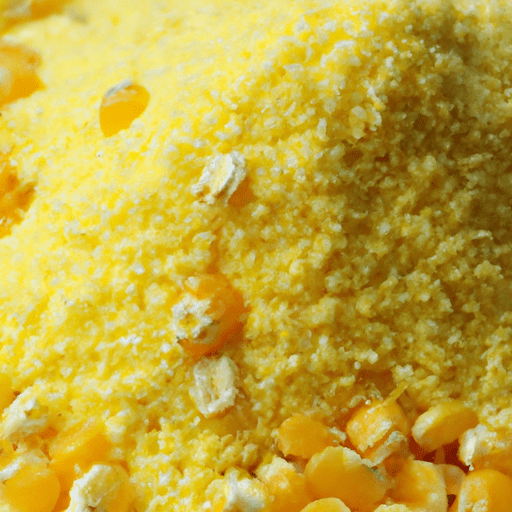The Versatile and Nutritious Corn Meal: A Staple of the Kitchen
Corn meal, a fine-grained flour made from dried corn kernels, is a versatile ingredient that has been a staple in regional cuisines around the world for centuries. This humble and affordable grain holds a rich history of culinary traditions and offers a delightful taste and texture to a variety of dishes. Join me as we explore the taste, common uses, nutritional value, and fascinating facts about corn meal.
The Taste of Corn Meal
Corn meal boasts a unique flavor profile characterized by its subtly sweet and nutty taste. When cooked, it exudes a hearty, satisfying aroma that fills the kitchen. The pleasant flavor of corn meal adds depth to both sweet and savory dishes, making it an exceptional ingredient in a diverse range of culinary creations.
Common Uses in Cooking
Polenta and Grits
One of the most well-known uses of corn meal is in making polenta and grits. These classic dishes originate from Italy and the Southern United States, respectively. Polenta is a creamy and comforting dish made by cooking corn meal with water or broth until it thickens into a smooth porridge-like consistency. Grits, on the other hand, are a Southern favorite made by simmering coarser corn meal in water or milk, resulting in a deliciously grainy texture. Both dishes can be enjoyed on their own or as a flavorful base for various toppings such as sautéed vegetables, cheese, or meat.
Cornbread and Muffins
Corn meal is the star ingredient in cornbread and corn muffins. These golden-brown delights are beloved across different cultures, each with its own unique twist. Whether it’s the Southern-style cornbread made with a touch of sweetness and a crumbly texture or the savory variants found in Latin American cuisine, corn meal is what gives these baked goods their distinct flavor and appeal.
Coating and Breading
The coarse texture of corn meal makes it an excellent coating or breading agent. From crispy fried chicken and fish to flavorful onion rings, corn meal provides a delectable crunch. Its slightly grainy texture adds an extra layer of texture and taste to these dishes, making them all the more satisfying.
Nutritional Value
Corn meal, while rich in flavor, also offers several nutritional benefits. It is a good source of carbohydrates, providing a steady release of energy for the body. In addition, corn meal contains dietary fiber, aiding in digestion and promoting feelings of fullness. Furthermore, it is naturally gluten-free, making it a suitable alternative for individuals with gluten sensitivity or celiac disease.
Fascinating Facts about Corn Meal
- Corn meal has been a staple food in Native American cuisines for thousands of years, serving as a cornerstone of their diet.
- The grinding process of corn kernels to make corn meal dates back to ancient civilizations, such as those of the Mayans and the Aztecs.
- Corn meal’s versatility shines through cultural variations such as Italian polenta, Mexican tamales, and Jamaican cornmeal porridge.
- In some regions of the United States, corn meal is traditionally used for dusting pizza pans, preventing dough from sticking and adding a unique touch of flavor.
Let Corn Meal Be Your Culinary Canvas
Corn meal, with its delightful taste, culinary flexibility, and rich history, invites you to embark on a culinary adventure. From comforting polenta to savory cornbread, let your creativity flow and experiment with this humble grain. Whether you’re a seasoned chef or a passionate home cook, corn meal is an ingredient that adds character and flavor to any meal. So, why not sprinkle some corn meal magic into your next dish?
Corn Meal
Origin and History: Corn meal, also known as corn flour or maize meal, is a staple food derived from ground corn. It is believed to have originated in Mesoamerica (modern-day Mexico and Central America) over 2,000 years ago. The indigenous people of the region, such as the Mayans and Aztecs, were skilled in cultivating and processing corn.
Common Uses: Corn meal is a versatile ingredient that finds its way into many culinary traditions around the world. It is commonly used to make cornbread, corn muffins, tortillas, tamales, and other baked goods. It can also be used as a coating for frying or as a thickener in dishes such as gravies and stews.
Nutritional Benefits: Corn meal offers several nutritional benefits. It is a good source of carbohydrates, providing energy for the body. It is also rich in dietary fiber, which aids in digestion and promotes a feeling of fullness. It contains essential minerals like iron, phosphorus, and magnesium, and is a good source of B-vitamins such as niacin and thiamin.
Unique Properties: One unique property of corn meal is its gluten-free nature, making it suitable for individuals with gluten sensitivities or celiac disease. It has a slightly sweet and nutty flavor that adds depth to many dishes. Corn meal also has a distinct granular texture, which can vary depending on the coarseness of the grind.
Historical Significance: Corn and its derivatives, such as corn meal, have played a significant role in the culinary history of many cultures. Native American tribes relied heavily on corn as a dietary staple and developed various culinary techniques to process it. The introduction of corn to Europe after Christopher Columbus’s voyages had a profound impact on European diets and agricultural practices. Today, corn meal continues to be a beloved ingredient worldwide.




Use the share button below if you liked it.
It makes me smile, when I see it.